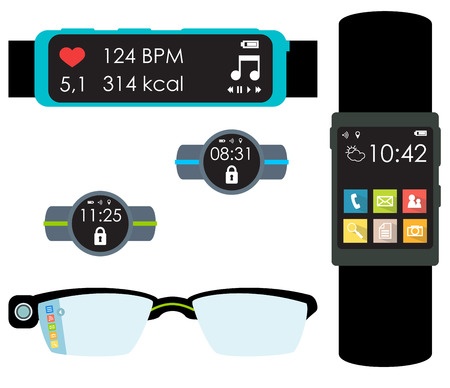The 4th of July is approaching, a U.S. holiday celebrating independence from the British. But sometimes the first war doesn’t solve all the problems. The War of 1812 is referred to as America’s “Second War of Independence,” fought to clarify a few things with the British Empire that remained from the American Revolutionary War.
While some suggest it was a scheme to annex Canada (imagine that outcome), British impressment (abduction) of American sailors, trade restrictions with France (the British were fighting Napoleon at the time) and a general vindication of American identity were the more likely causes.
The trend of users bringing their own devices and expecting to use them on corporate networks started at the end of the last decade with the release of the iPhone. But like American history, is there is a second BYOD revolution looming with the rise of wearable technology?
 The first BYOD war of independence
The first BYOD war of independence
When business users asserted that their consumer technology was superior to company-issued devices, it was inevitable that a BYOD revolution would be fought with corporate IT organizations. As it stands today, the user’s BYOD forces have largely won their independence, with some remaining restrictions or software in place to secure sensitive information.
Since BYOD is largely mobile, there are unique security concerns, including the unsecured networks they communicate on as well as the potential for the loss of the device itself. Corporate-owned devices came complete with mobile device management (MDM) software, but users rebelled against it on their own devices because:
1. Users don’t want to give IT the ability to wipe their personal photos, data and apps on their own devices.
2. Even with containerization, employees are still giving up some control over their device. That idea is especially unappealing to many users since BYOD is by definition, personal.
These IT challenges have shifted the focus of mobile security to controlling access – mobile application management (MAM) – rather than focus on the most disposable, least secure part (the device).
The second BYOD war – a return to dependence?
Just as things have started to settle out in the BYOD revolution, along comes a new force – wearable devices, led primarily by smart watches, but including fitness bands and now virtual or augmented reality glasses.
The appeal of wearables is hands-free use, or ease-of-data-tracking for personal information. Wearables are typically tethered to another mobile device via Bluetooth, so it would be assumed that they will inherit some security from that device. But if the intent is to make information access easier, IT must evaluate what that means for security. What sort of authentication needs to be in place? How secure is that Bluetooth connection? How much information is stored on the wearable device that itself needs protecting? These are all new skirmishes that IT security must engage.
The funny thing is, though, that the killer apps for wearable technology are equally attuned for business, rather than being only consumer-oriented:
• Got an email or text and don’t want to rudely interrupt a sales conversation by pulling out your phone? Just glance at your wrist.
• Need complex instructions while assembling an aircraft in a Boeing plant? Just access them on your smart glasses.
• Want high-priority ERP notifications that need immediate attention? Send it to a smartwatch app that vibrates.
• For warehouse workers, wearables can provide high-tech mobility and tracking features without the need for additional standalone point-solution machines.
• Want to train surgeons by having them virtually peer over the shoulder of a doctor? Have them wear virtual reality glasses fed by a camera on a pair of smart glasses worn by a surgeon.
So, is there really a demand for independence with wearables? If corporations are to provide wearables to help make workers more efficient, perhaps there is an opportunity to demand proper security for those devices as part of the rollout.
Though America won its first war of independence, British military superiority ensured that there remained restrictions on the new country, precipitating a second war. Can IT security find a way to coexist with wearables faster than the first BYOD war and avoid a second war?












